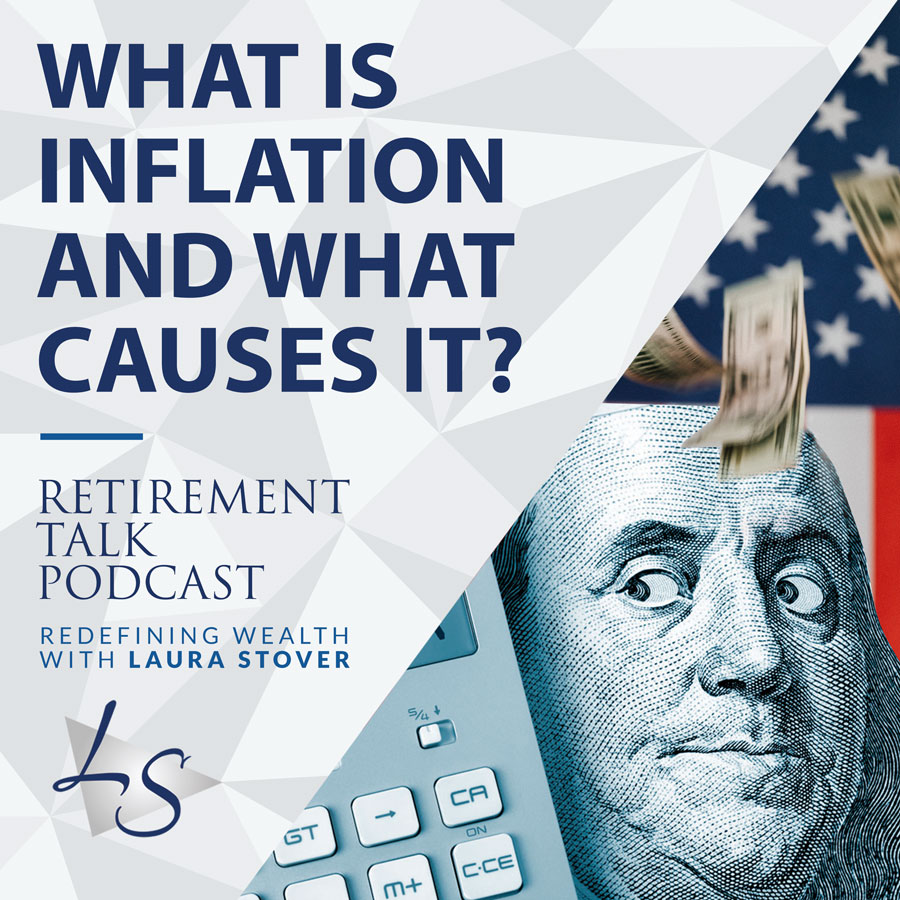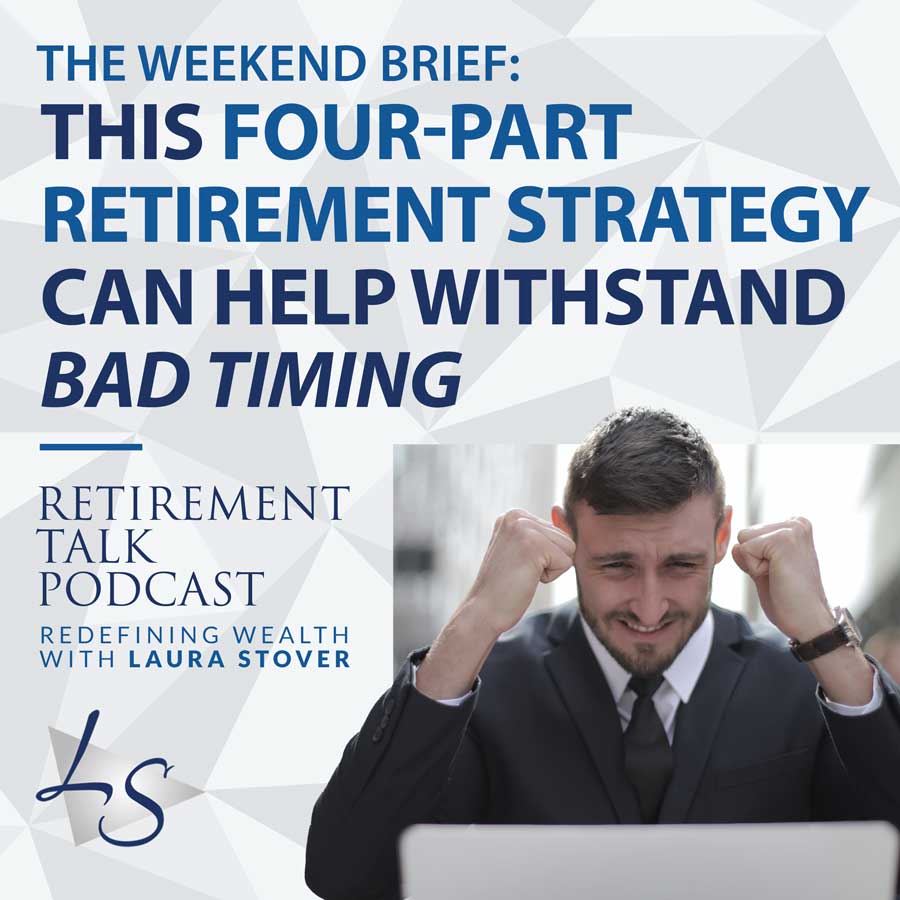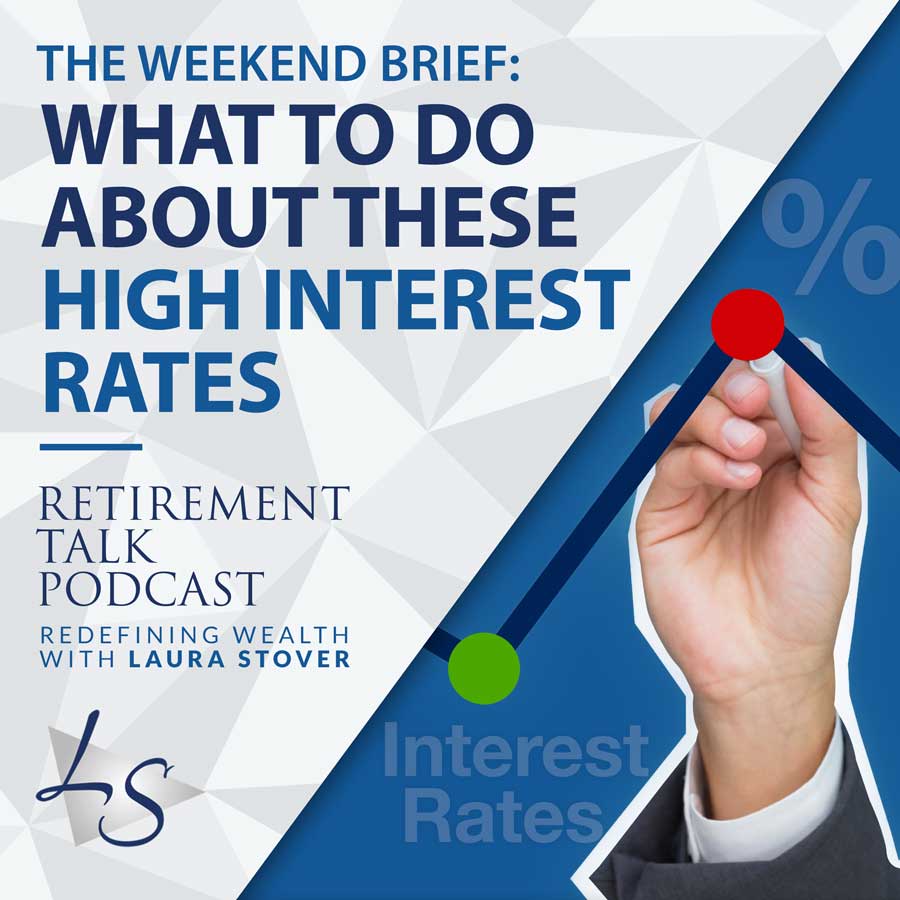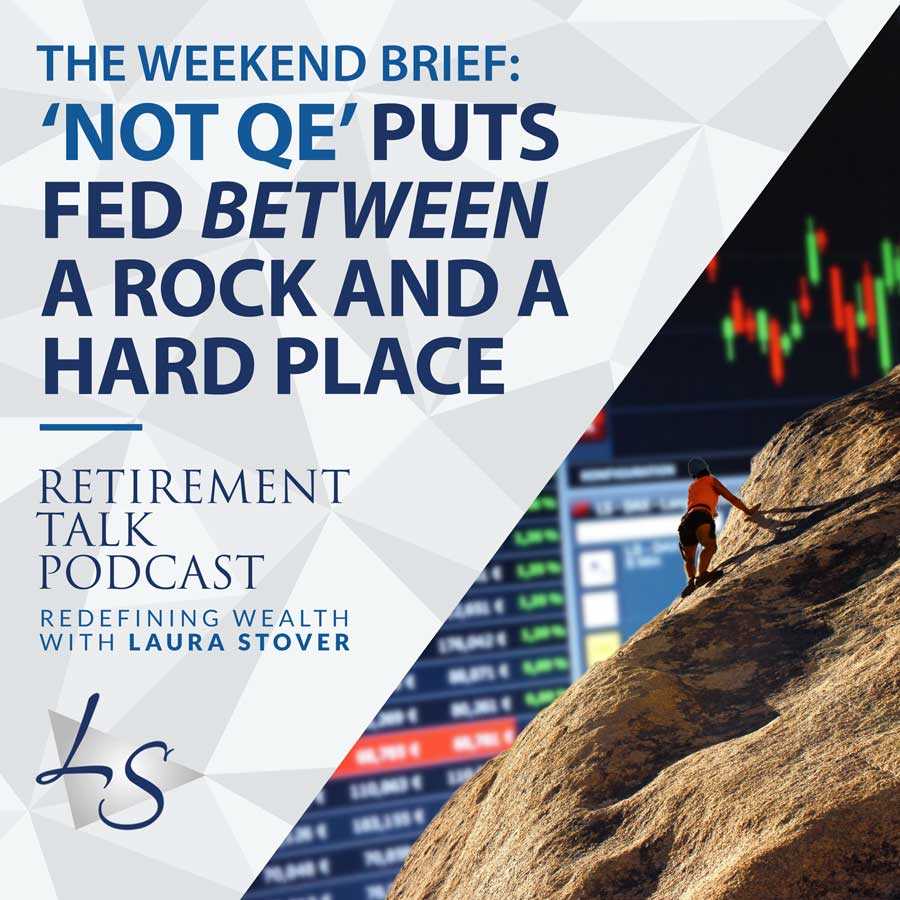Prices have been steadily climbing for some time now. What is driving this unprecedented increase in inflation and how can you insulate your financial future from these black swan events? Many retirees are aware of risk and volatility within the market, but inflation itself can be a silent killer that lowers your future buying power when it comes to things like gas, groceries, and health care costs.
We have recently hit a 40-year high with inflation at 8.5%. Most experts still expect us to be facing high inflation rates a year from now, some are even predicting the possibility of a recession. Unpacking inflation and how it can impact your investments and retirement future is essential. If you aren’t incorporating this into your future income plan you may find yourself taking too much risk on in the future to make up for those losses. Bonds and fixed income are also subject to the risk of inflation as they are inversely related to interest rates and an increase in rates can result in a drop. So, how do we make sure our portfolio has the right amount of balance?
We recommend really analyzing your budget and understanding what you are getting for your dollar. This allows you to move into a diversified investment strategy that can garner you a return that will make your budget work during an inflationary period. If you are invested in bonds, think about asking your advisor about the various tools you can use to protect your plan. Find the best rotation of investment tools fit for you. On today’s episode, we’ll break down inflation, its impact on your money, and how you can protect yourself now and in the future.
More Reading on Today’s Topic >>
Rate & Review and Subscribe to the Podcast:
https://podcasts.apple.com/us/podcast/retirement-talk-podcast-with-laura-stover/id571347188
Links
Schedule a Review: https://redefiningwealth.info/schedule/
Timestamps (show notes):
1:10 – Prices are rising
4:05 – Inflation hits a 40-year high
10:39 – The big problems with inflation
13:45 – Having the right amount of balance
17:44 – Inflations impact on bonds
23:26 – An income plan that address black swan events
29:00 – BRIC among the four most dominant economies
Listen & Subscribe
Review the Transcript:
Ron Stutz:
Welcome to Retirement Talk, the Redefining Wealth show, your source for financial information, specifically for pre-retirees and retirees. We’re here each and every week to help you better navigate during these economic times. We are here to discuss thoughts and ideas in the field of finance and retirement, as well as discuss trending topics that can impact your bottom line. We will break it all down.
These discussions can help you make better informed decisions so you can make better financial choices and live the lifestyle you imagine for retirement. Laura Stover is a registered financial consultant and CEO of LS Wealth Management, as well as founder and owner of LS Tax, a consulting firm. She has been featured in Forbes, CNBC and The Wall Street Journal. I’m Ron Stutz. Our topic of discussion for today is, what is inflation and what cause of it. Now, here’s your host, Laura Stover, along with co-host for this week, certified financial planner, Michael Wallin.
Laura Stover:
Hello. Hello. Hello. I always get to look across the screen. Folks are hearing my voice, but I see two, the most handsome men here each and every week. A lot of you hear Michael’s voice, but you can’t see his pretty face. And my engineer, Dan, doesn’t really talk, but he’s there smiling all the way through. Thank you for joining another episode of Retirement Talk, the redefining wealth show. We have a lot to talk about on this week’s episode 101. And if you’ve missed any past episodes and you want to go back and catch a little bit of a variety of topics, go to redefiningwealth.info, click the podcast tab, and you can pick over a hundred shows now that are archived there. Or go to Apple, Spotify, wherever you listen to find shows like you’re listening to today. And I want to thank everyone for joining us.
Prices are climbing. They’ve been climbing. We are going to discuss inflation drivers today. Inflation. And from a financial planning perspective, what do you need to be aware of to insulate or better insulate yourself from some of these black swan events that obviously, you’re going to stay retired a long time, maybe you’re already in retirement, we cannot predict each and every year some of the different things that are going to happen. But I can promise you one thing, new black swan events will continuously happen.
And this is a driver that is kind of like a silent killer. And we’ve heard for years, people will maybe have a caution when it comes to market risk. When they’re nearing or in retirement, they consider a volatile stock market a risk. Well, inflation is one of those risks you only see now in prices when you’re buying goods at the grocery store, the gasoline station, various sectors of the economy are affected a little bit more. There’s a number of imbalances. We were talking about this before we went on the air. What do you need to have in terms of a rock solid income plan so that you can account for these things as expenses may add onto already escalating healthcare costs?
So this is a variety of things. The effect on bonds, interest rates now are a big discussion because of the Fed’s policy, how are those policies potentially affecting your investments and the cost of your expenditures, your budget, your cashflow, and what types of planning can you put in place to prepare and insulate yourself in a more favorable way to navigate through changing time? So Michael, it came out here just recently, a 40 year high. If we look at the new inflation number, which hit 8.5%, we were previously at 7.9% in February. If you strip out and go down to the core inflation, stripping out food and energy, we’re like at 6.5%.
And looking a year out in terms of projections, most experts are still predicting that we will still be at about 6.6% a year from now, which is very, very high. We’ve been spoiled for many years, having record low, zero interest rates. Now, we know the Fed, in order to taper the effects and try to get the inflation under control, he’s going to keep raising the rates more than likely. We’ve seen a bit of a rocky stock market as a start to this year because of some of the uncertainty in late January, investors experienced one of the common, but just an utterly nerve-wracking amount of pullbacks with the stock market. It’s been very volatile. And an accumulation of factors that have affected the market with inflationary pressure, potential adjustments to monetary policy.
Now we have geopolitical concerns here recently. And you combine all that to put the market into a little bit of a tailspin this year. But we’re still looking… We’re not that far off from some all time market highs, despite the volatility. I think the big problem that we’re seeing now, the consumer is seeing if you’re on a budget, if you’re looking at your cash flow, if you’re looking at prices, consumers are seeing some sharp prices for a variety of goods and services because of strong demand colliding with those. Also some supply shortages still.
So inflation is a vexing problem and it’s facing economists and the government policy makers, and some of the tools that they’re using to deploy to tame these price measures. In some scenarios, they’re talking, it could push us into a recession in 2023.
Michael Wallin:
Laura, as we talk to our clients on a daily basis, I think that inflation is probably one of the most misunderstood financial areas. It is the silent killer. When we look at the medical field, we talk about heart attacks and we look at high blood pressure and they always talk about those being the silent killer. Inflation is the silent killer, both on accumulating and on the distribution side. And many times, when we’re talking to our clients, we talk about inflation. And for our clients, we’re really looking back for those individuals that drew a bias on the definition of what is inflation, from what we saw in the 1970s.
In the 1970s, it was a variety. It was a type of inflation, but it was more of stagflation. Today, we hear inflation used and it’s really looking at a much broader definition, looking at the rising cost of a basket of goods over a period of time that generally results from too much demand chasing too few products that are out there. And we’re seeing that today, where we’re seeing that we’ve had an expansion of stimulus dollars dumped into the economy today. But we were hit with coming out of the back end of a pandemic, which affected a global economy, where we look at manufacturing or those countries that generally create the products that are then distributed to other countries, that were heavily impacted such as China, Indonesia, other areas that are in the Asian continent.
We saw that reduction of workforce reducing the amount of products, but now we had so much more money. So the value of the dollar was decelerating and we had fewer products to be chasing there. We also see that as automobiles here in the United States, a lot of people saw the increase in pricing of either used vehicles, because we could not get any new vehicles out. There’s another type of inflation there that’s called the cost push inflation. And cost push is the rising cost of those production items. We could not get semiconductors. So we’re seeing the skyrocketing price on automobiles.
And I think it’s very important for all the listeners to understand that inflation doesn’t impact everybody the same. Everybody has a different inflation rate because it’s what items are you consuming. And that’s really important what we look at in our six pillars. As we’re building an income plan for someone, we really want to get down to the details of where do you spend your money? What is your lifestyle like? And both in your current expenditures, but also in your future projected expenditures, because all too often, individuals will take an inflation rate and take their household budget and apply this arbitrary number of, let’s say that number, Laura, that you shared earlier of 6.6%.
Laura Stover:
For next year.
Michael Wallin:
Yeah, for next year. If we apply that inflation rate to a current household and projected that their future cost were going to be at that rate, the exposure of risk necessary on their investment accounts would skyrocket. And there is no way that you could validate that you would need a 13 to 15% rate of return on accounts as a retiree, just to offset inflation, plus make the return necessary to be able to live the lifestyle that you’ve always dreamed of, or that you have a desire for. So I think it’s so important that you look at this silent killer and spend your time really understanding the rising cost and what those policies can do to you, because it’s so important that you know that to have a good, solid retirement plan in the future.
Laura Stover:
So our favorite word here on Retirement Talk, and I think you invented it, Michael, is to unpack. So that is, having the right balance and the redefining wealth process covers those six pillars that we’ve identified as key risk factors all of us, at some point in time, will face. So unpacking what you just said is so very important when the Fed continues to raise the interest rates, which is really the federal funds rate in terms of how it affects another rate, which is prime rate, and the federal funds rate creases, so does the prime rate.
So when we’re looking at our investments, we’re looking at our cashflow, we’re looking at our budget, obviously, now lumbers are little less expensive. So certain elements on the inflationary rack are at different levels of inflation. Although across the board, it’s affecting the purse of most people because we all need to eat and we have to have transportation to get places. And this is probably where the biggest expenditure now, in my view, lies.
So the erosion of purchase power, you kind of brought that fact up. We see clients on one end to another, maybe overly conservative, too much in cash because the market’s a little bit bumpy. They go to the sideline, their risk tolerance is very, very lower. They don’t have growth buckets segregated out, separated from their income, which should always be guaranteed so that you’re not risking your income. But that erosion of purchase power is problem number one that you brought up, the silent killer that people don’t see.
So if you’re all in low bearing interest accounts or cash accounts, you’re losing over eight and a half percent return right now that you do not see. The other problem that you brought up is, if we focus on that inflation factor now because we didn’t plan properly for it from the front end with our income plan, are we subjecting ourself to too much risk to try to keep up with the cost? That’s a bad thing to do.
And then if people think bonds are safe and fixed income… Well, how do rising interest rates affect bonds? Well, the price of the bonds inversely related to interest rates. So an increase in these interest rates will cause an equivalent drop. And we’ve seen that happen over the last 12 plus months in terms of the price of bonds. So if you own a five year bond with a 2% coupon, when the five year rates are at two and your bond should be priced at, what we call par value, that five year rate goes to three, your 2% bond now has less value.
Let’s talk about how they can envision having a process to make sure the right balance is in the portfolio that’s adaptive in the process to address erosion of purchase power, not taking too much risk and making sure you understand conservative or things like bonds, if you’re trying to take risk off the table, it still can have risk.
Michael Wallin:
Well, I think it goes back, Laura, to that first point you brought up when you were talking about what the inflation is measuring, and when you’re taking out energy cost and you’re taking out food cost. I think a lot of retirees today that are sitting there, they’re looking at their current budget, and what they’re seeing is the rising cost is really two things. Their food budget is going up, their energy cost is going up. And I would throw in a third thing, their medical expenses could be increasing as well.
But if we focus on the two, food and energy, the fact that gasoline’s going up and it’s above $4 a gallon in most areas, a lot of retail places are having to pay a surcharge for distribution to get the goods and services moved over. So as those are moved over, that charge is then applied to higher cost on food. And you couple that with a couple of different things of shrinkflation and skimpflation, so when you’re looking at skimpflation out there, that’s the quality of the food is reducing, and shrinkflation is the items are actually being packaged in smaller containers. And so…
Laura Stover:
You know, Whisps cheese crisps that I love on keto, I just received a shipment today, Michael. I opened the bag. They have just enough that fit in the palm of my hand now. They have definitely condensed the amount of little wisp that are in my little snack. I noticed. I mean, there was room for another whole half of wisp in there. Like seriously, there’s probably 15 and that’s it.
Michael Wallin:
Well, the surfing size-
Laura Stover:
And people are doing that now. The serving sizes are being shrunk.
Michael Wallin:
They are. And that is impacting individuals trying to make their household budgets work. Laura, I grew up in a home with three boys and a sister. If you looked at the amount of food that… And my mom fed us through the ’70s. And when we look at going into today’s time, if the same amount of food had to be purchased, the loaf of bread that used to be 18 inches is now down to about 14 or 12 inches. We would have to be buying two to three extra loafs of bread just to feed the same number of meals.
Laura Stover:
I believe that.
Michael Wallin:
And that’s one of the things that is secretly being done. A lot of the listeners on here, it might be the first time that they’ve even heard of shrinkflation. But it’s the reality. We used to get a bag of chips and the whole bag of chips would be… the amount of product would fill up the whole bag. Now you open up a bag of potato chips and you got two servings down at the bottom. And you have anywhere between 75% of the packaging was packaged air.
Laura Stover:
Shouldn’t eat chips anyhow, right? So…
Michael Wallin:
That’s right. Well, I can tell you that the shrinkflation has not helped my waistline. I’m not having shrinkflation on it. But it is something that I think it is very important for listeners to look at their budgets and really get down to where am I spending my money? What am I getting for the services or the products that I’m buying? Because then that allows you to move into what you were just discussing, which was your investing strategy, because you want to have your money into different tranches based upon the amount of risk level. But it’s got to be able to yield you an amount out of return, commiserate to the amount needed to make your budget work, not only today, but all the way through your retirement years.
Laura Stover:
Before we go to break, let’s hit the discussion on bonds so that that part doesn’t get lost. So erosion of purchase power. Obviously, if you’re saving excess cash, everyone needs some money in cash, but excess is a silent killer. Bonds always considered pretty much a safe haven has not been the case for those conservative investors. And equities, even dividend producing equities. Some people just are staying in these vehicles or they’re not invested the right way with the right balance. And bonds are very much affected by interest rates.
And I’m a big believer when it comes to needed income, there’s some options for safe alternatives depending upon what you’re trying to accomplish. But the price of bonds right now, and in the fixed income for those conservative investors, there’s structured notes, there’s a lot of other tools in the tool chest, and your advisor needs to be educating you about some of these different vehicles. Just because you haven’t heard of them, doesn’t make it not a viable. I still consult on taxes. We were just talking about that.
And I think, when we look at tax returns, most of us, you and me, Mike, we look at it and we know a lot about it. Paul, who’s on our tax team, he can read it like the palm of a hand in two seconds, boom, boom, boom, boom, boom. And it’s just food for thought, things at least I want to know, and potentially make changes. If I’ve never towed about it, that doesn’t give me the ability to decide how I want to do things. And I think a lot of people miss that because they’re not going through a process to uncover more information on some of these areas.
Michael Wallin:
Well, I think it’s the rotation. I mean, for years, we’ve heard a 60, 40 portfolio in retirements, where you need to be 60% equity, 40% bond. Well, that’s been proven untrue during the last year, and mostly in this last quarter where we saw a shrinking or a contraction in the equity markets. And a safe place typically is if you’re moving out of equities, you move into bonds or you more heavily positioned into bonds. But over the last quarter, if we take just the AGG bond index and we look at what has occurred with it, as the market was contracting on the equity side, we saw the AGG bond contracting even greater. So they were swimming to the bottom of the pond faster than the equities were. So we had a very unique situation.
We had our situation with what was happening in the Ukraine. So we had the markets uncertainty what was happening. We had the uncertainty of what was going to happen with interest rates rising. So the equity market was contracting. But because we’ve been in historical low interest rates for the last 10, 12 years, and now they’re raising those interest rates, like you said earlier with the bonds, it’s an inverted relationship. So interest rates are rising, the value of existing bonds are going into a discount value. And so bond rates were plummeting.
And so I think it’s very important that you have to take a fresh look. It is not a one time set it and forget it. “Oh, I’ve checked off the box. My retirement plan is set and I’m just going to go live retirement.” You have to approach your retirement plan as a second job. When you go into retirement, you need to be making sure that your spending habits and what you’re doing in budgeting, all of that is now your job. You have to look at it, participate in it, work with a qualified financial professional that doesn’t just give a one size fits all, but looks holistically at all areas of your life and your lifestyle to say this is the best approach. And has it liquid enough that you can pivot and adjust as necessary for those changing times just like we just experienced at the beginning of 2022?
Laura Stover:
You’re listening to Retirement Talk. I’m Laura Stover. And along with me, a certified financial planner, Michael Wallin. When we come back, we are going to discuss what your income plan should look like, continuing this discussion about inflation. We just came off a tax season. Some of you may be writing on extensions right now. Maybe some of you are like, “Woo, that’s done for the year.” We’re going to talk about some tax harvesting, how do you weigh tax alpha versus the volatility in your portfolio, and a rising deficit that our country is facing. We’re going to talk about all of that here on Retirement talk. Go to redefiningwealth.info, schedule a 15 minute strategy session with any questions you may have for Michael or myself.
Ron Stutz:
We hope you’re enjoying the show. I want to offer you a chance to take advantage of looking a little deeper. If you have been a long time listener, or maybe you just found the show, be sure and take advantage of a 15 minute strategy session with our host. Go to redefiningwealth.info. Click schedule review. We walk through our six step redefining wealth process. Make certain you have a rock solid income plan and much more. We provide you with a complimentary portfolio x-ray and stress test. Go to redefiningwealth.info. Schedule your strategy session virtually by phone or in person. Let the LS team assist you.
Laura Stover:
We’re discussing inflation. How do you implement a retirement income plan to address some of these black swan events that come throughout our lifetime? New things happen each and every year. And having a framework in place is really the key. A plan is adaptive to some of these changing cycles, new issues that just come before us Michael, the deficit being one of them. We want to talk about the national debt. How will that affect our retirement accounts potentially here sooner rather than later?
And another problem that we’re seeing a challenge, I should say, for those listening that have individual or joint investment accounts, wherever that may be invested. 2020, 2021 was a very robust market year. So that means you have gains in those accounts. Come tax time now, many individual accounts and joint accounts had long term capital gains. I mean, if you weren’t making money in ’21, your advisor needed fired a long time ago.
So a lot of people, regardless of where they were invested, probably had some profits. The whole task of realizing that is something that we have been working very diligently on with a lot of the clients that we work with, depending on the size of these accounts, some positions, if they’ve been held for a very long period of time, the client may in fact owe just a phenomenal amount of long-term gains.
So obviously, someone’s not going to want to realize 400,000 in capital gains in one year. So some of the strategies in the processes that we’re implementing to go through and untangle people that are in those positions, because the firm that they were with before maybe was buy and hold. There’s a lot of potential volatility and risk to these accounts. So we have the task of managing the risk, but making sure we’re not putting an unfavorable exorbitant tax burden on those individuals. Let’s unpack that one, Mike.
Michael Wallin:
I always like to talk to our clients about the mindset of taxes. I think there’s this idea out there that we always want to avoid paying taxes. And that’s where a lot of retirees get themselves in trouble because you’re going to pay taxes. Are you going to control the taxation, or you’re going to let someone else control the taxation? Because if you’re in a non-qualified account and it makes sense, and it’s something that you need to do because your overall plan will benefit from making a change of the underlying positions, which create the realization of a capital gain.
Let me back up one step here, Laura, and say that when you look at an investment account that you’re still holding the positions and you’re looking at a monthly statement, you’re going to see capital appreciation and capital depreciation. Until you actually trade or liquidate that position, you have not actually experienced a capital gain or a capital loss. And those are really two things that so often clients call in and they’re confused about. And I think it’s very important that they understand it.
Having capital gains is not a bad thing. That means your advisor made you money. That means that if you started with a $100,000 and it grew to $120,000, you have a tax favored, under current tax laws, a tax favored position that in most cases, that tax rate’s going to be at 15% on qualified dividends or capital gains. So when we’re looking at that, it’s important to say, “Well, if I’m in a 20 or 22% tax bracket, and I can take these capital gains because I need to really reposition them and I’m getting a tax favored rate, is that going to be better for me?” And that is where you sit down and you really identify what is the goal.
I had an advisor that was talking to me a couple of months ago, Laura, and he was like, well, if we trade this, it’s going to give me some capital gains. And I said, “Well, what if the price on that underlying position goes down?” It can go back to your cost basis. And the only way you’re going to avoid taxes is if all the gains we’ve accumulated for you goes back to your original deposit. He said, “Well, I don’t want that.” And I said, “Well, which one would you rather have? Pay 15% on the gains,” which was like $3,000, “or potentially lose those gains back down to the original pricing and lose $20,000.”
And sometimes it’s basic math, but it’s an education opportunity for clients to understand taxation is not always bad. Taxation can be in your favor.
Laura Stover:
And that’s why it’s one of the six pillars. We think it’s something you should be proactive with. And it’s part of the process. It goes right along with how you invest and what you’re doing on an ongoing basis. That makes sense for income, whether it be taxable, tax free, and in terms of tax harvesting and all the different components to make sure you’re looking at that side of your portfolio management, that’s more important than ever. And lastly, here, Michael, I think it’s very important, you and I, we read a lot of David Walker’s book. I had the opportunity to meet him a few years ago and he’s kind of on a roll again. He’s a friend of mine on some social media and he’s posting, he’s trying to create awareness and education.
And reading some recent material, I mean, he is just going on and on. He’s been saying this. And now the spending by the government’s even worse. Okay. He started preaching, “We are spending more than we can afford.” Thus, that’s part of the problem with the inflation conversation we’re having today. It is a component of the problem. Yes, we had a pandemic. Yes, we had to print more money. Yes, now Putin and the war and supply chain issues. Those are fractional contributors to an already existing issue. And as the Fed is forced to start to raise interest rates, well, that’s going to create another issue that nobody’s talking about. Interest on the deficit, on the national debt.
And I came across, and I don’t mean to throw this at you, but something called BRIC, B-R-I-C. I don’t know if you’re familiar with that. But I saw this and Mr. Walker was talking about that the term was coined by economist Jim O’Neil in 2001. It’s an acronym for four countries, which were deemed to be at a similar stage of newly advanced economic development. And in 2009, the leaders of those four countries held their first summit. Anyhow, the important part of this, the projection is, the economic potential of Brazil, Russia, India, and China is such that they could become among the four most dominant economies by 2050. And a lot of this is because of trade policy.
Now, we’re not going to get into a big philosophical discussion on this, but I know we don’t know the future, but no one’s doing anything to really… It’s going to be painful choices to fix this deficit at this point.
Michael Wallin:
Well, when you look at the BRIC, I think it’s important to understand how alliances around the globe is occurring. And as it relates to our deficit, I think it’s important for the listeners to understand China owns along with Japan about 25% of our national debt. So when you look at a $30 trillion deficit and the two countries, China and Japan combined own $7.5 trillion of our national debt, I think that’s a lot of exposure. We’re seeing a lot of our farm lands that are being purchased up. I just heard last night on the news, there’s some new legislation that’s being passed, or at least proposed for passing that would stop foreign countries or foreign entities of by up the farmland here in the United States.
I think that is imperative. We are seeing the chess table being restructured right before our eyes. I think it’s very important that listeners become aware that they really get involved, and not as a political show, people really need to identify those individuals that they’re voting. There is a lot of changes that are being tossed out there. And the power of the vote is very important. You need to become educated and make good decisions.
Laura Stover:
Absolutely. And so doing your homework, I may like who’s running in my local parties. There’s several good candidates running for commissioner in my local area. And I like them all. But you have to go with the one that you think has the bandwidth to deal with… you got to know how to deal with people and you got to know how to make sound fiscal decisions. And let’s just hope as this unravels with the rising interest rates, that’s going to change things possibly over the course of the next 24 months or so though, Michael, in terms of, depending on if we get three or four federal funds interest rate hikes, at what point do we start seeing the interest on that becoming astronomical, like a trillion dollars a day potentially.
Michael Wallin:
And that equates directly to the domino that’s right behind it. When that falls over, it’s taxation. Because it’s only through taxation can we then make that. Because in 1972, when we went off of the gold, backing of our economy to the taxation of the American people, what we are bound to is that national debt of $30 trillion that we have to pay the interest on that or default and the payment of that is by recapturing taxation from every American citizen that works, that has earned income, or that has retirement dollars that are coming out. That is why you’re seeing, every time this change that under the current administration, they keep trying to bring up a new tax bill. And it is confiscating more and more of the wealth of the individual to pay the obligation of what we have issued in our national treasury.
Laura Stover:
Well, I’ve enjoyed speaking with you today, and Dan’s been bopping his head, and I think he agrees with a lot of what we say. And then he doesn’t bop his head, maybe if he’s thinking about what we said. And then he doesn’t show any sign if he disagrees with what we said. That is a great engineer. And we’ve been helping clients this past week. I’ve worked with a lot of clients interested in gold and silver. And I’ll just put end to show on this nugget. A great inflation head, it should never be more than 10 to 15% of anyone’s total portfolio.
But if you’re interested in the actual holding, having it shipped to you in a secret truck that comes directly and delivers this to you, pre 1933… And tell them real quick why it’s pre 1933, Michael, and that means no 1099, because the government confiscated gold. What year was it? 1934.
Michael Wallin:
Well, any of those coins are considered a collectible. And so those are pre-numismatic coins, and there is no regulatory overview of those. You’re holding them as collectibles. But they are an ounce of gold or an ounce of silver, just like any other precious metal. And the good thing is there’s no capital gains on the rising value of them in the future.
Laura Stover:
Yeah. So the company we work with, they’re pre 1933. And yeah, right now, we’re recommending a 70% to 30% silver to the gold ratio because the price of gold is really going up. But I think at this pace, they’re expecting it to rise a whole lot more. So that could make some sense for a portion of your portfolio.
We talked about a lot today. I hope you enjoyed the show. If you have any questions for Michael or myself, please go redefiningwealth.info. Right there, you will find a calendar link. You can schedule a 15 minute strategy session to discuss your unique, specific question or situation. Thank you for listening to Retirement Talk.
Ron Stutz:
Redefining Wealth is a registered trademark of LS Wealth Management. Take advantage of a complimentary plan. Know where you stand regardless of the market. Walk through the Redefining Wealth process and have a clear picture of the key risk you likely will face. Achieve a deeper understanding of how to properly plan for these risks with the Redefining Wealth framework. Schedule a strategy session today by going to redefiningwealth.info. That’s redefiningwealth.info.
Redefining Wealth is a registered trademark of LS wealth management. Investing involves risk, including the potential loss of principle. Any references to protection, safety, or lifetime income generally refer to fixed insurance products, never securities or investments. Insurance guarantees are backed by the financial strength and claims paying abilities of the issuing carrier. This show is intended for informational purposes only. It is not intended to be used as the sole basis for financial decisions, nor should it be construed as advice designed to meet the particular needs of an individual situation.
LS Wealth Management LLC is not permitted to offer, and no statement made during this show shall constitute tax or legal advice. Our firm is not affiliated with or endorsed by the US government or any governmental agency. The information and opinions contained here in provided by third parties have been obtained from sources believed to be reliable, but accuracy and completeness cannot be guaranteed by LS Wealth Management LLC.
Investment advisory service is offered through optimized advisory services, an SEC registered investment advisory. LS Wealth Management is a separate entity.












